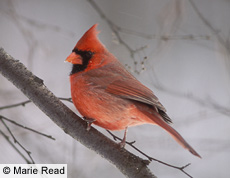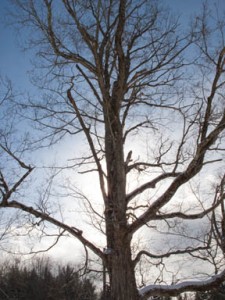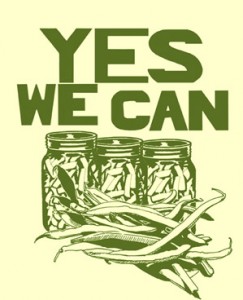Here’s a website that is worth a look. It’s called square foot gardening. It’s a commercial site that has a garden shop. It is a variation of raised bed planting with information about growing food in small spaces.
Category Archives: urban farming
Watch Atlanta Peregrines on Web Cam

It’s so wonderful that falcons and hawks have made a come back in big cities. We’ve had red tailed hawks in our yard drooling over our chickens. I know they are in the area to munch on the rodents that live near all our restaurants, and I say “welcome hawks! Munch away!”
Well Atlanta has set up a webcam to spy on a pair of nesting falcons. Read the press release below to learn more about this pair.
Atlanta’s most prominent falcons couple is back in the public eye.
A Web camera at www.georgiawildlife.com is again providing frequent updates on two adult peregrine falcons and their nest outside the 51st-floor offices of the McKenna, Long & Aldridge law firm in downtown Atlanta.
The protected raptors, which typically mate for life, began laying eggs February 27. They have four now. The nestlings are expected in early April. The young will leave the nest at about 5 weeks old.
Clay C. Long, founding partner and a former chairman of the law firm, said the peregrines offer an annual treat, watching the young “from birth through the transition from down to feathers, then learning to fly and to hunt, and finally ending with our couple sending their young off in the world to find their own cliffs on which to dwell.”
Peregrines were removed from the federal list of threatened and endangered species because of a successful population recovery effort, but Georgia still lists the birds as rare. There are only two known peregrine pairs nesting in Georgia, both in Atlanta, said Jim Ozier, a Nongame Conservation Section program manager with the state Wildlife Resources Division.
Peregrines are possibly the fastest animal in the world. Their dives, used to catch birds in flight, have been clocked at more than 200 mph.
The Wildlife Resources Division and the world have watched falcons nest at McKenna, Long & Aldridge for five years, thanks to the law firm and a grant from The Garden Club of Georgia. One of the first peregrines nesting there was released in Atlanta by the state, in a partnership with Georgia Power and Zoo Atlanta, Ozier said.
The new falcons will face an urban environment plump with pigeons and other prey on the wing but also packed with potential hazards such as windows and traffic. Two of the three peregrines that hatched on the high-rise balcony last year were later treated for injuries.
“The young have to learn how to survive in the city,” Ozier said.
To see this year’s nest, go to www.georgiawildlife.com and click “Conservation,” then “Species of Concern” and the peregrine falcon Web cam link under “Bird Conservation” label. The view shows the planter in which the birds nest. Frequently hit your computer’s refresh, or reload page, button: The images are updated every 30 seconds.
Tonight is Earth Hour

Tonight at 8:30 switch off your lights for one hour.
In 2009, Earth Hour is being taken to the next level, with the goal of 1 billion people switching off their lights as part of a global vote. Unlike any election in history, it is not about what country you’re from, but instead, what planet you’re from. VOTE EARTH is a global call to action for every individual, every business, and every community. A call to stand up and take control over the future of our planet. Over 74 countries and territories have pledged their support to VOTE EARTH during Earth Hour 2009, and this number is growing everyday.
We all have a vote, and every single vote counts. Together we can take control of the future of our planet, for future generations.
VOTE EARTH by simply switching off your lights for one hour, and join the world for Earth Hour.
Fresh Kills Park

Fresh Kills Park
On April 4th Staten Island’s very own Fresh Kills Landfill will officially open again as Fresh Kills Park. There will be free tours and they are touting state-of-the-art ecological restoration. In a short video, they talk about how they “capped” the landfill. They pipe out the methane from the rotting crud to power local homes. They covered the entire landfill with 3 feet of fill dirt, an impermeable (ha) plastic cover and then 8 feet of clean soil. What about all the toxins leaching into the water??? I think I’ll have to see this park to believe it!
Michelle Obama will plant veggies on the White House Lawn
Growing Power

Growing Power in an Urban Food Desert
by Roger Bybee
Will Allen is bringing farming and fresh foods back into city neighborhoods.
Will Allen shows some of the 10,000 fish growing in one of Growing Power’s four-foot-deep, 10,000-gallon aquaponics tanks. Waste from the fish feeds greens and tomatoes. The plants purify the water for the fish. The fish eventually go to market.
At the northern outskirts of Milwaukee, in a neighborhood of boxy post-WWII homes near the sprawling Park Lawn housing project, stand 14 greenhouses arrayed on two acres of land. This is Growing Power, the only land within the Milwaukee city limits zoned as farmland.
Founded by MacArthur Foundation “genius” fellow Will Allen, Growing Power is an active farm producing tons of food each year, a food distribution hub, and a training center. It’s also the home base for an expanding network of similar community food centers, including a Chicago branch run by Allen’s daughter, Erika. Growing Power is in what Allen calls a “food desert,” a part of the city devoid of full-service grocery stores but lined with fast-food joints, liquor stores, and convenience stores selling mostly soda and sweets. Growing Power is an oasis in that desert.
Allen’s parents were sharecroppers in South Carolina until they bought the small farm in Rockville, Maryland, where Allen grew up. “My parents were the biggest influence on my life,” says Allen. “We didn’t have a TV and we relied on a wood stove, but we were known as the ‘food family’ because we had so much food. We could feed 30 people for supper.”
He was a high school All-American in basketball, played for the University of Miami, and played pro ball with the American Basketball Association in Europe. At a towering 6 feet 7 inches, with Schwarzenegger-size biceps, and chiseled features, Allen looks ready to step back onto the court.
After stints as an executive for Kentucky Fried Chicken and Proctor and Gamble, he returned to his family roots. “I never wanted a career in the corporate world, but I wanted to be able to afford a good education for my kids,” he explains. “At the right time, the kids were in college and the opportunity to buy the farm and start Growing Power came up,” Allen remembers. “From a spiritual standpoint, it worked out right; it was a natural thing, something I wanted to do.”
Growing Food
Since 1993, Allen has focused on developing Growing Power’s urban agriculture project, which grows vegetables and fruit in its greenhouses, raises goats, ducks, bees, turkeys, and—in an aquaponics system designed by Allen—tilapia and Great Lakes Perch—altogether, 159 varieties of food.
Growing Power also has a 40-acre rural farm in Merton, 45 minutes outside Milwaukee, with five acres devoted to intensive vegetable growing and the balance used for sustainably grown hays, grasses, and legumes which provide food for the urban farm’s livestock.
Allen has taken the knowledge he gained growing up on the farm and supplemented it with the latest in sustainable techniques and his own experimentation.
Growing Power composts more than 6 million pounds of food waste a year, including the farm’s own waste, material from local food distributors, spent grain from a local brewery, and the grounds from a local coffee shop. Allen counts as part of his livestock the red wiggler worms that turn that waste into “Milwaukee Black Gold” worm castings.
Allen seems to take a particular delight in thrusting his steam-shovel-sized hands into a rich mixture of soil and worms in Growing Power’s greenhouses. “You can’t grow anything without good soil,” he preaches to a group touring the project.
Allen designed an aquaponics system, built for just $3,000, a fraction of the $50,000 cost of a commercially-built system. In addition to tilapia, a common fish in aquaculture, Allen also grows yellow perch, a fish once a staple of the Milwaukee diet. Pollution and overfishing killed the Lake Michigan perch fishery; Growing Power will soon make this local favorite available again. The fish are raised in 10,000-gallon tanks where 10,000 fingerlings grow to market size in as little as nine months.
But the fish are only one product of Allen’s aquaponics system. The water from the fish tanks flows into a gravel bed, where the waste breaks down to produce nitrogen in a form plants can use. The gravel bed supports a crop of watercress, which further filters the water. The nutrient-rich water is then pumped to overhead beds to feed crops of tomatoes and salad greens.
The plants extract the nutrients while the worms in the soil consume bacteria from the water, which emerges virtually pristine and flows back into the fish tanks. This vertical growing system multiplies the productivity of the farm’s limited space.
“Growing Power is probably the leading urban agricultural project in the United States,” says Jerry Kaufman, a professor emeritus in urban and regional planning at the University of Wisconsin–Madison. “Growing Power is not just talking about what needs to be changed, it’s accomplishing it.”
Growing Community
Simply growing that much food in a small space is a remarkable achievement. But it’s only the start of Growing Power’s mission. “Low-quality food is resulting in diabetes, obesity, and sickness from processed food,” Allen maintains. “Poor people are not educated about nutrition and don’t have access to stores that sell nutritious food, and they wind up with diabetes and heart disease.”
Growing healthy food is part of a larger transformational project that will create a more just society, as Allen sees it.
He also works on the Growing Food and Justice Initiative, a national network of about 500 people that fights what he calls “food racism,” the structural denial of wholesome food to poor African-American and Latino neighborhoods. “One of our four strategic goals is to dismantle racism in the food system. Just as there is redlining in lending, there is redlining by grocery stores, denying access to people of color by staying out of minority communities.”
The store at Growing Power’s Milwaukee farm is the only place for miles around that carries fresh produce, free-range eggs, grass-fed beef, and homegrown honey. Even in winter, customers find the handmade shelves and aging coolers stocked with fresh-picked salad greens.
Growing Power co-director Karen Parker, who has worked alongside Allen since the project started, says, “It’s a wonderful thing to change people’s lives through changing what they’re eating.” Parker believes her parents would have lived much longer with a healthier diet. She takes a deep pride in providing fresh, healthy food. “Last summer during the salmonella problem with tomatoes, I was able to tell customers, ‘You don’t have to worry. These tomatoes were grown right here.’ I found myself selling out of tomatoes.”
Growing Power supplements its own products with food from the Rainbow Farming Cooperative, which Allen started at the same time as Growing Power. The cooperative is made up of about 300 family farms in Wisconsin, Michigan, Northern Illinois, and the South. The southern farmers, who are primarily African-Americans, make it possible to offer fresh fruits and vegetables year-round. The produce goes into Growing Power’s popular Farm-to-City Market Baskets. A week’s worth of 12-15 varieties of produce costs $16. A $9 “Junior/Senior” basket, with smaller quantities of the same produce, is also available.
Each Friday, Growing Power delivers 275–350 Market Baskets of food to more than 20 agencies, community centers, and other sites around Milwaukee for distribution. Bernita Samson, a retiree in her 60s with eight grandchildren, picked up the Market Basket habit from her brother and late mother. “I get the biggest kick out of what I get in my bag each week,” she says. “At Sunday dinners my grandkids say, ‘Ooh, Grandma this is good!’ They really like what they call the ‘smashed potatoes.’”
For Samson, Growing Power provides not only healthy food but also a vital source of community. “Sometimes it’s so crowded at the [Growing Power] store on Saturdays you can’t even get up in there. Going there gives you a chance to meet people and talk.”
Growing Power is also a source of 35 good-paying jobs in an area of high unemployment. The staff of Growing Power is highly diverse—a mixture of young and old, African-American, white, Asian, Native American, and Latino, with remarkably varied work histories. All live nearby. Co-director Karen Parker, a high-energy African-American woman who radiates warmth whether greeting her 6-year-old granddaughter or welcoming a volunteer, notes that some staff are former professionals who left the high-stress environments of corporations, social work, and other fields. At Growing Power they find a new kind of fulfillment in the blend of hard physical labor and thoughtful planning based on scientific research. Others are former blue-collar workers, farmers, or recent college graduates. All find satisfaction in transforming how Americans eat.
Loretta Mays, 21, who works in the marketing department, was only 14 when Karen Parker recruited her into the Growing Power Youth Corps program. “It’s a good learning experience, and you learn the importance of good food. I never understood how food was grown. Now, its like, ‘Wow, I can grow my own garden.’”
Growing Youth
Four middle and high schools bring students to Growing Power to learn about vermiculture (raising worms) and growing crops, and to eat the food they’ve grown. The impact can change the kids’ lives.
Anthony Jackson started working at Growing Power when he was 14, with half of his earnings going to school clothes and half to a bank account that his church set up. At age 20, he went away to college.
“I learned a good work ethic—that things don’t come easy,” he says of his time at Growing Power. “You’d see Will doing the same things he asked you to do.”
The experience helped to shape the direction of his college education. “Early on, the importance of the healthy food really didn’t hit home,” he says. “But when I got a degree in natural resources, it came to mean a lot more.” Jackson, now 29, still maintains a strong connection, shopping at Growing Power and attending workshops.
Working with the young people in the community is central to Growing Power’s work and its hopes for the future. It provides year-round gardening activities for kids aged 10-18 at its Milwaukee headquarters and offers summertime farming experience on its parcel in Merton, adjacent to the Boys and Girls Club’s Camp Mason. Growing Power recently leased five acres at Milwaukee’s Maple Tree School and built a community garden in partnership with the school. Growing Power also assists school gardens at the Urban Day School and the University School of Milwaukee.
“For kids to make their own soil, grow their own food, and then get to eat it, that’s a very powerful experience,” Will Allen says. “There’s nothing like hands-on experience for kids who are bored with school. They get excited about what they’re learning and then take it back to their classes.”
Growing Power on the Road
Success in Milwaukee isn’t enough for Allen. Growing Power seeks nothing less than, in the words of the organization’s mission statement, “creating a just world, one food-secure community at a time.” To show that the techniques pioneered in Milwaukee can work anywhere, Growing Power is helping set up five projects in impoverished areas across the United States, including training centers in Forest City, Arkansas; Lancaster, Massachusetts; and Shelby and Mound Bayou, Mississippi.
The largest application of Growing Power’s model is in Chicago, where Erika Allen, Will’s daughter, is carrying on the family tradition. The Chicago project started in the Cabrini-Green public housing project, where Growing Power’s techniques helped the Fourth Presbyterian Church transform a basketball court into a flourishing community garden fueled by Will Allen’s beloved red worms. Growing Power also has a half-acre farm in Grant Park, in the heart of downtown Chicago. The Grant Park project focuses on job training for young people, involving them in all aspects of growing the 150 varieties of heirloom vegetables, herbs, and edible flowers the farm sells in Chicago farmers markets and through the Farm-to-City Market Basket program, like the one pioneered in Milwaukee.
After Erika Allen, 39, earned a degree in art therapy, she eventually settled back into her family’s farming tradition, which she believes extends back some 400 years. “I was very much influenced by that tradition, and I got really inspired,” she says. “It was a way of learning to honor my ancestors.”
But she has not turned her back on her artistic impulses. “With my love of art, the Grant Park project is an opportunity to integrate the two—with the colors, design, textures of the plants.”
The most important element, she says, is “to see it inspiring other people. When people in communities like Detroit are really suffering, we can show that we did it in Chicago, with women and a bunch of teenagers.”
The work of involving people in producing and distributing healthy food in Chicago’s food deserts is part of equalizing power in American society, Erika Allen says. “Our work is infused with social justice, fighting racism and oppression.”
The same hunger for justice drives Will Allen’s vision of changing the food system. “How do you take our model and our vision around the world?” Allen asks. “It takes some foot-soldiers who become change agents. We’ve trained an awful lot of people.”
Every year, 10,000 people tour the Growing Power farms. About 3,000 youths and adults from around the world participate in formal training sessions, learning how to build aquaponics systems, construct “hoop houses” (low-cost greenhouses covered by clear plastic), use compost to heat greenhouses, use worms to turn waste into rich fertilizer, and all the other low-tech, high-yield techniques that Growing Power has developed or adapted.
Will Allen takes obvious pleasure in seeing people fed healthy food in great quantities, just as his parents did on their small farm. But he says he derives his deepest satisfaction from a sense of changing the lives of other people harmed by the present food system and the inequities it reflects. “I don’t do things to satisfy myself,” he states firmly. “This is what I’m doing for a bigger pool of people out there.”
Roger Bybee wrote this article as part of Food for Everyone, the Spring 2009 issue of YES! Magazine. Roger is a Milwaukee-based writer and has been a progressive activist for 40 years. His work has appeared in Z, Dollars & Sense, Multinational Monitor, The Progressive, and elsewhere. His website is www.zcommunications.org-/zspace/rogerdbybee.
Your Urban Garden is Better with Bees
From the North American Pollinator Protection Campaign
Special thanks to Dr. Gordon Frankie
Large fuzzy bumble bees and busy honey bees with loud buzzing flights are what many people picture when they think “bee.” But researchers have estimated that California and its highly diverse habitats house about 1,500 different species of bees, most of which are natives. While honey bees and bumble bees are social and live in colonies, the vast majority of bees are solitary in nature. Bee research from California could be influential in helping gardens in urban settings everywhere.
Bees visit flowers to collect nectar (carbohydrates to power their flight) and pollen (providing protein, oils and minerals needed by bee larvae). Bees find their favorite flowers by color and scent; a colorful and aromatic native bee garden is pleasing to humans as well. Bees are everywhere; every urban yard has bees whether you know it or not, no matter how beat down or poorly tended.
What can bees do for me?
Here are several reasons for finding bees desirable in your yard: Bees are a critical part of natural environments, and they provide a valuable service to humans when they pollinate our fruit and vegetable plants and wildflowers. Worldwide evidence suggests pollinator populations are declining due many factors, including habitat destruction. Urban areas can provide important habitat for many bee species. Honey bee numbers in North America have been declining over the past 10 years due to parasitic tracheal and Varroa mites; so making space for native bees guards against dependence on a single species. Most native bees are immune from mite attack. Bees are fun to observe! Watch a bee forage, collect pollen or sip nectar from flowers. Bumble bees, large and easy to see, can be approached relatively closely to make observations. Bees, like birds and butterflies and many other animals in our yards, give us a sense of pleasure knowing that wild organisms can make productive use of artificial urban environments.
Aren’t bees dangerous? Don’t they sting?
Most bees don’t sting, and few species defend their nest (bumblebees are an exception). Bees generally only use their stingers in defense. No need to fear being stung if you move slowly and non-aggressively. Only females are capable of stinging (males of all bee species lack this capacity).
What to Plant – An Exotic Question
Bees, especially native bees, are more attracted to native plants than exotics. “Natives” occur naturally in a specific region; they were not introduced either intentionally or unintentionally to the area by humans or animals. Plants and animals native to elsewhere outside a given region are regarded as “exotics.” In a Frankie et al. study (2002), California native plants were at least four times more likely to attract native bees. Why? Many hybrid ornamental varieties have reduced rewards (pollen and nectar) for bees due to commercial attempts to make larger or showy flowers. Multi-petalled roses are an example. Native bees have no historical relationship with exotic plants.
What can you do? Group several “bee” plants together in flowering patches of one meter squared, to increase overall attraction of the site to a greater diversity of bees. Don’t use pesticides in your garden. If you must, use fast-acting, short-residual options, and apply at dusk when pollinators are least active. Create homes for bees! Many of the wild bees you may encounter in your backyard garden make their burrow homes in the soil or in holes in trees. You can also encourage bee-residents by providing nesting blocks.
Bees Love these Plant Families (especially these species)
Asteraceae – Daisy, Aster, Sunflower family (Gaillardia grandiflora, Bidens ferufolia, Coreopsis grandiflora, Cosmos binnatus, Helianthus annuus) Fabaceae – Legume family Lamiaceae – Mint, Lavender, Salvia family (Agastache and Lavandula species, Salvia uliginosa) Polygonaceae – Buckwheat family Rosaceae – Rose, Apple, Cherry, Strawberry, Raspberry family Scrophulariaceae – Snapdragon, Penstemon family (Hebe species, Linaria purpurea)
Other species – Eryngium species (carrot family), Geranium incanum (Geranium family), Phacelia tanacetifolia (waterfall family), Caryopteris species (verbena family), Sedum species
Some of the bees they may invite Bumble bees – social, large, fuzzy, noisy flight, boisterous behavior Honey bees – social, busy, smaller and less fuzzy than bumble bees Other Apidae species – social, large stingless bees Halictid bees – solitary, small black or metallic colored bees, includes sweat bees and nomia bees Megachilid bees – solitary, often metallic blue or black, includes leaf-cutter bees and orchard mason bees
Visit http://nature.Berkeley.edu/urbanbeegardens for more information on urban bee gardening!
Resources:
Frankie, G., Thorp, R., Schindler, M., Ertter, B. and Przybylski, M. 2002. Bees in Berkeley. Fremontia. 30:3-4, p. 50-58.
Cane, J. 2003. Gardening for Native Bees in North America. www.LoganBeeLab.usu.edu, www.loganbeelab.usu.edu/How%20To/CommonName.htm (has a more detailed list of “bee-plants”).
Kemp, W. and Bosch, J. 2001. Bees in Your Backyard. American Bee Journal. March 2001, p. 183-185.
Contact:
North American Pollinator Protection Campaign (NAPPC)for more information on pollinators and pollinator gardening!
www.nappc.org info@nappc.org
423 Washington St. 5th Fl, San Francisco, CA 94111
(415) 362-1137
The Great Backyard Bird Count

This Friday is the annual backyard bird count, where people from all over the country count the birds they run across. It goes from Feb. 13-16th. Counting birds helps answer many questions such as:
* How will this winter’s snow and cold temperatures influence bird populations?
* Where are winter finches and other “irruptive” species that appear in large numbers during some years but not others?
* How will the timing of birds’ migrations compare with past years?
* How are bird diseases, such as West Nile virus, affecting birds in different regions?
* What kinds of differences in bird diversity are apparent in cities versus suburban, rural, and natural areas?
* Are any birds undergoing worrisome declines that point to the need for conservation attention?
Here’s some information for how you can participate.
IT’S AS EASY AS 1, 2, 3!
1. Plan to count birds for at least 15 minutes on one or more days of the count, February 13–16, 2009. You can count for longer than that if you wish! Count birds in as many places and on as many days as you like—one day, two days, or all four days. Submit a separate checklist for each new day. You can also submit more than one checklist per day if you count in other locations on that day.
2. Count the greatest number of individuals of each species that you see together at any one time. You may find it helpful to print out your regional bird checklist to get an idea of the kinds of birds you’re likely to see in your area in February. You could take note of the highest number or each species you see on this checklist.
3. When you’re finished, enter your results through our web page. You’ll see a button marked “Enter Your Checklists!” on the website home page beginning on the first day of the count (February 13, 2009). It will remain active until the deadline for data submission on March 1, 2009.
Some people find it helpful to fill out the form before entering it on the website. By printing it off ahead of time, they know what information they need to be aware of, such as snow depth, for example.
If you’re new to bird watching, you might want to check out our “Learn About Birds” section. You’ll find help with tricky bird identifications, choosing binoculars, bird feeding tips, and much more.
School Seedling Application for NY State

Planting for Knowledge School Seedling Program
Planting and caring for a seedling tree can help young people learn about the natural world and the value of trees in it. DEC’s school seedling program provides New York State’s school students with this experience.
Why Participate?
Most of us recognize the beauty of trees and their many other values. Trees provide food and shelter for wildlife and prevent loss of soil (erosion).
They help protect our streams and lakes by stabilizing soil and using nutrients that would otherwise wash into waterways. Trees help moderate temperature and muffle noise. They even help improve air quality by absorbing some airborne compounds that could be harmful to us, and by breathing out oxygen.
When students plant tree seedlings, they can see for themselves the structure of trees, learn what they need and how they grow. Teachers can use the planting process to discuss the benefits trees provide, while including many subjects that their classes are studying. As seedlings mature, the young trees can be a continuing, personalized way of relating book learning to visible, living examples of what is being taught.
Personal involvement in establishing a grove of trees will help students become aware of their role in protecting the environment. Ultimately, the experience will also help them make intelligent decisions about conservation and use of natural resources.
Who is Eligible?
All schools may participate – public, private or parochial; nursery, elementary, secondary, vocational, college or university. Any school-sponsored organization is also eligible. Planting can be related to a wide variety of scholastic programs – it is not confined to any given subject, purpose or age level.
The department encourages planting on school property so that students can be responsible for the care and protection of the seedlings. Other possible locations are parks, roadsides, public buildings and nursing homes.
What’s Available?
DEC’s Saratoga Tree Nursery will have species of both spruce and pine available for participants in this program, School Seedling Brochure, (pdf, 88kb). Only one of the offered species may be ordered and 50 seedlings of that species will be given to each participating school. You will need 1,800 square feet of open space for 50 seedlings. Each needs a growing space about six feet in diameter.
For schools where planting space is limited, an urban wildlife packet is available. This contains 30 seedlings of shrubs that are particularly attractive to songbirds and, planted six feet apart, require only 900 square feet of open space.
Getting Started:
Get in touch with your Regional Forestry Office for specific information about this program in your area. A forester will be available to advise you on the appropriate species of trees to choose and proper planting technique.
Species available:
White Pine (Pinus strobus): Native long-needled evergreen. Grows best in well-drained soils and reaches heights in excess of 100 feet. Can be planted statewide. Avg. hgt 8″-12″
Norway Spruce (Picea abies): European short-needled evergreen. Will grow in clay and loamy soils and reaches heights in excess of 100 feet. Can be planted in most parts of New York except northern areas. Avg. hgt 12″
White Spruce (Picea glauca): Native short-needled evergreen. Grows in clay and loamy soils and reaches 70 feet at maturity. Can be planted statewide. Avg. hgt 12″
Packet #2: Urban wildlife packet contains a mix of 30 wildlife shrub seedlings. Will grow in clay and loamy soils. Plant varieties of the same kind together to promote pollination and fruiting. Can be planted statewide.
The seedlings you receive will be two or three years old and approximately 8 to 16 inches tall. Shipment will be by UPS, beginning in early April through the second week in May. Select a shipping date at least three days prior to the planting date. Shipping is on Monday, Tuesday or Wednesday to avoid weekend warehouse storage.
Planting Instructions
Seedlings are perishable. Follow handling instructions printed on bags to ensure survival.
TOOLS REQUIRED: Shovel and bucket
1. Place the seedlings in a bucket and fill with water until all the roots are covered.
2. Remove all vegetation down to the soil layer for at least one foot around the planting site.
3. Dig a hole large enough to contain the roots.
4. Place the roots of the seedling in the hole and carefully spread them out. The root collar (where roots join the stem) should be at or just below the ground’s surface. The seedling should stand straight.
5. Fill the hole with soil and gently compact the soil to remove air pockets that could dry out the roots.
6. Water the seedling slowly and thoroughly after planting to settle the soil. If rainfall is not adequate, water weekly after planting for the first year.
7. Mark the seedlings with a stake so they won’t be cut off with a lawn mower.
8. Fertilizer is not recommended at planting time. It can be applied two or three years after planting when the root system has developed.
NYS DEC
Saratoga Tree Nursery
2369 Route 50 South
Saratoga Springs, NY 12866-4738
Telephone: (518) 581-1439

